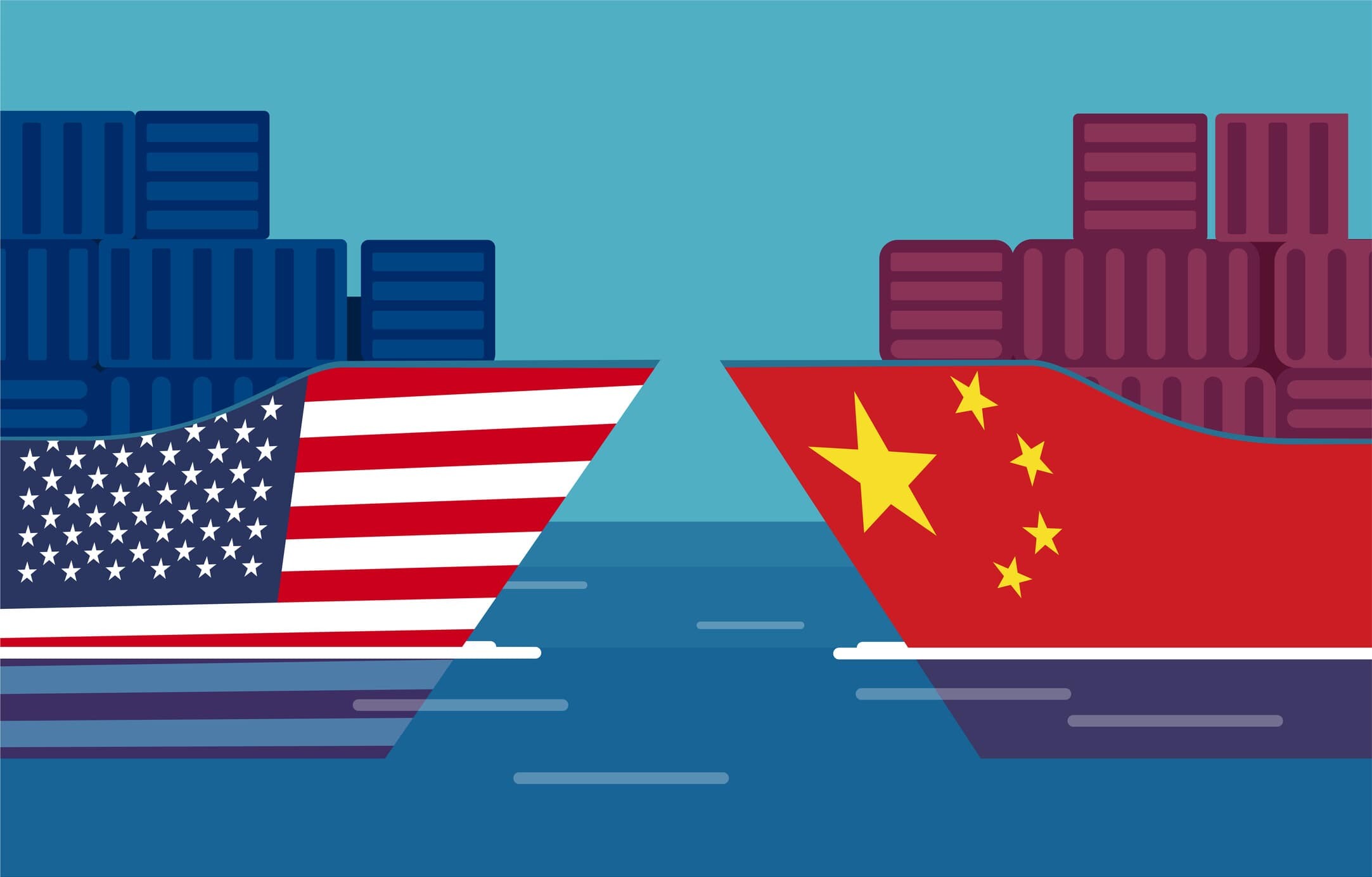Canada-US Trade: Debunking Trump's Assertions Of US Self-Sufficiency

Table of Contents
The Depth and Breadth of Canada-US Economic Integration
The economic integration between Canada and the US extends far beyond simple transactional exchange. It’s a complex web of bilateral trade encompassing goods, services, and investments, demonstrating a level of economic interdependence that is often overlooked.
Bilateral Trade in Goods: A Foundation of Mutual Reliance
Key sectors like energy, automotive manufacturing, and agriculture form the bedrock of Canada-US trade. This isn't just about exchanging goods; it's about shared supply chains, specialized production, and mutually beneficial economic activity.
- Energy: Canada is a major supplier of oil, gas, and electricity to the US, significantly impacting US energy security and prices.
- Automotive: The North American automotive industry is deeply integrated, with parts and vehicles crossing the border multiple times during the manufacturing process.
- Agriculture: Canadian agricultural products, from grains to livestock, are vital to the US food supply, contributing significantly to US food security.
The interconnectedness is undeniable. For example, Canada accounts for a significant percentage of US imports in energy and agricultural products, while the US represents a substantial market for Canadian goods. This intricate dance of goods flowing across the border highlights the fallacy of US economic independence.
Services Trade and Investment Flows: Beyond Tangible Goods
The Canada-US trade relationship extends far beyond tangible goods. The services sector and foreign direct investment (FDI) play an equally crucial role, driving economic growth on both sides of the border.
- Finance: Extensive cross-border financial transactions and investment flows demonstrate significant economic interconnectedness.
- Tourism: Millions of tourists cross the border annually, contributing billions to the economies of both nations.
- Technology: Collaboration in research and development, as well as the cross-border flow of technology and expertise, fuels innovation and job creation.
The value of service trade and FDI between Canada and the US is substantial, further cementing the reality of their deep economic interdependence. Ignoring this interconnectedness would be economically reckless.
The Fallacy of US Self-Sufficiency in Key Sectors
The notion of US self-sufficiency is simply not supported by the evidence. Several key sectors demonstrate the country's reliance on Canadian goods and services.
Energy Dependence: A Critical Interdependence
The US relies heavily on Canadian energy resources, making the claim of self-sufficiency in this area untenable. Reducing or eliminating this trade would have severe consequences.
- Price Volatility: A loss of Canadian energy imports would likely lead to significantly higher energy prices for US consumers and businesses.
- Energy Security: Diversifying energy sources is crucial, but Canada represents a reliable and geographically proximate energy partner.
Data clearly shows a significant percentage of US energy imports originate from Canada, highlighting the vulnerability of the US energy sector if this trade relationship were disrupted.
Automotive Manufacturing: An Integrated Supply Chain
The North American automotive industry operates on a "just-in-time" manufacturing model, reliant on the seamless flow of parts and vehicles across the Canada-US border. Trade barriers would be disastrous.
- Supply Chain Disruptions: Any disruption to this integrated supply chain would cripple production and have significant economic repercussions.
- Job Losses: Thousands of jobs on both sides of the border depend on this integrated manufacturing process.
The volume and value of cross-border automotive parts and vehicle movement illustrate the impossibility of self-sufficiency in this sector.
Agricultural Products: Food Security and Pricing
Canadian agricultural exports are crucial to the US market, affecting food security and consumer prices. Restricting this trade would have far-reaching consequences.
- Food Prices: A reduction in Canadian agricultural imports could lead to increased food prices in the US.
- Food Security: Canadian agricultural products provide essential components of the US food supply.
The sheer volume and value of agricultural trade between Canada and the US demonstrate the vital role Canada plays in supporting US food security.
The Economic Benefits of Canada-US Trade for Both Nations
The Canada-US trade relationship delivers significant economic benefits to both nations, creating jobs and boosting economic growth.
Job Creation and Economic Growth: A Mutually Beneficial Partnership
Canada-US trade supports countless jobs in both countries, contributing substantially to GDP growth.
- Manufacturing: The automotive and other manufacturing sectors benefit tremendously from this integrated trade.
- Services: The finance, tourism, and technology sectors also see significant job creation fueled by this bilateral trade.
Data clearly shows the substantial contribution of Canada-US trade to GDP growth in both countries, emphasizing its critical role in economic prosperity.
Consumer Benefits: Choice, Prices, and Availability
Consumers on both sides of the border benefit from increased choice, lower prices, and greater product availability because of Canada-US trade.
- Lower Prices: Competition fostered by this trade keeps prices lower than they would be otherwise.
- Greater Choice: Consumers have access to a wider range of goods and services.
The price effects of this trade relationship are clearly demonstrable, showcasing the benefits to consumers in both countries.
Conclusion: Reasserting the Importance of Canada-US Trade
This analysis clearly demonstrates the deep economic integration between Canada and the US, shattering the myth of American self-sufficiency. The mutual economic benefits of this bilateral trade relationship are undeniable, crucial for job creation, economic growth, and consumer welfare. Any attempt to diminish this vital partnership would have severe negative consequences for both nations. Arguments for protectionism or unilateral action disregard the substantial evidence showcasing the intertwined nature of these economies.
Understanding the intricacies of Canada-US trade is crucial for safeguarding economic prosperity on both sides of the border. Learn more about the benefits of robust Canada-US trade policies today!

Featured Posts
-
 Johnstons Speedy Goal Stars Defeat Avalanche 6 2 Leading Series 3 2
May 16, 2025
Johnstons Speedy Goal Stars Defeat Avalanche 6 2 Leading Series 3 2
May 16, 2025 -
 Post Game Report Earthquakes Defeat At Hands Of Rapids
May 16, 2025
Post Game Report Earthquakes Defeat At Hands Of Rapids
May 16, 2025 -
 All You Need To Know About The Steam Sale In 2025
May 16, 2025
All You Need To Know About The Steam Sale In 2025
May 16, 2025 -
 Presiden Prabowo Dan Dpr Sepakat Pembangunan Giant Sea Wall Dimulai
May 16, 2025
Presiden Prabowo Dan Dpr Sepakat Pembangunan Giant Sea Wall Dimulai
May 16, 2025 -
 Injury Update Celtics Game 3 Tatum Brown In Holiday Out
May 16, 2025
Injury Update Celtics Game 3 Tatum Brown In Holiday Out
May 16, 2025
